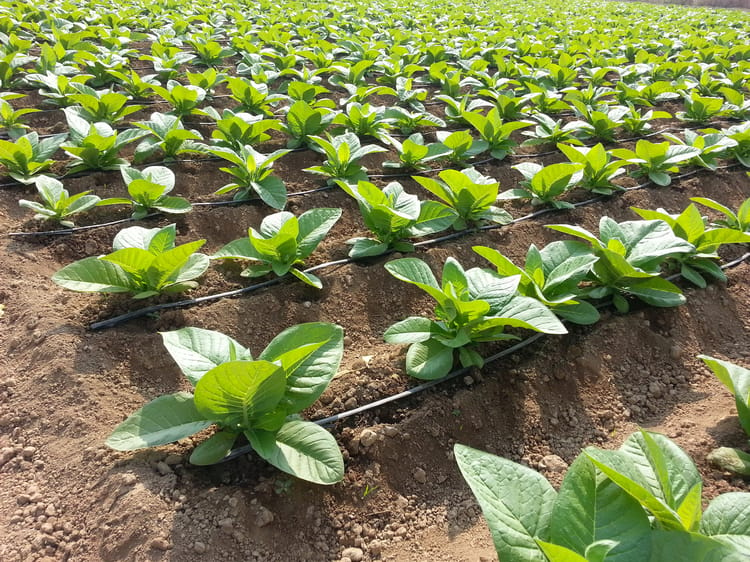Tobacco Production Using Drip Irrigation.
Drip irrigation in tobacco is not new. In the early 1990’s, drip irrigation was successfully used in Flue Cured tobacco in both South Carolina and Georgia. Yield increases have been obtained ranging from 20% – 40% at the same time improving the quality, with a grade improvement of 10% – 20%.

The last couple of years, drip irrigation has caught on in Kentucky and Tennessee with growers who experienced dry weather when the tobacco plants were knee high. With production costs between $4,000 and $5,000 per acre, no grower can afford to have the tobacco affected by drought. An extended dry period during the critical growing stage of the crop will affect the yield and quality. Benefits of drip irrigation include non-wetting of the leaves, less diseases especially black shank, which can be spread through leaves and stems, also brown spot which appears to be worse after overhead irrigation. The uniformity of a drip system is much better than with a traveler, especially in wind conditions.
Netafim provides the following resources for a grower to learn more about drip irrigation for tobacco production.
A Tobacco Production Manual – 16 page overview on how to use drip irrigation for tobacco. Readers will learn about drip system components, typical layouts, water use, irrigation scheduling, system start-up and maintenance. It is meant as a guide to aid in the decision to move to drip technology and how to manage this technology to obtain the desired results.

NEED HELP FINDING THE BEST SOLUTION FOR YOUR FARM?
Get in touch, and we can talk about what your crop needs.
